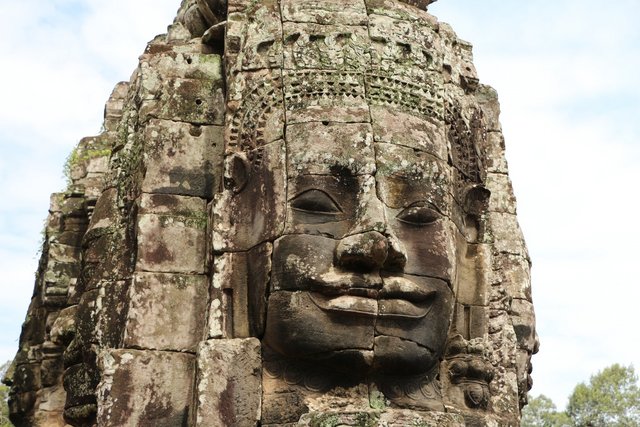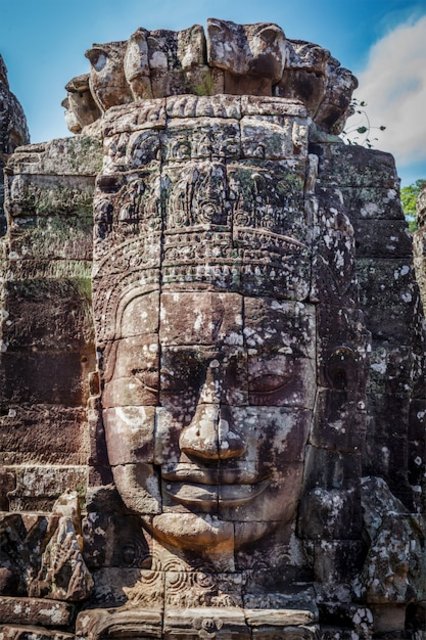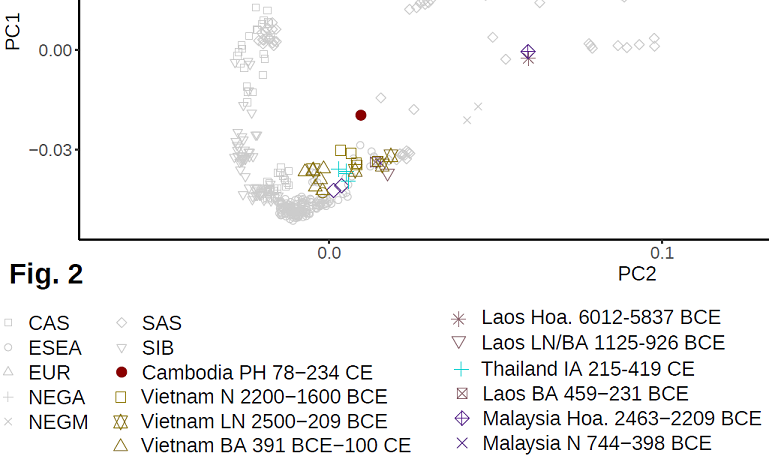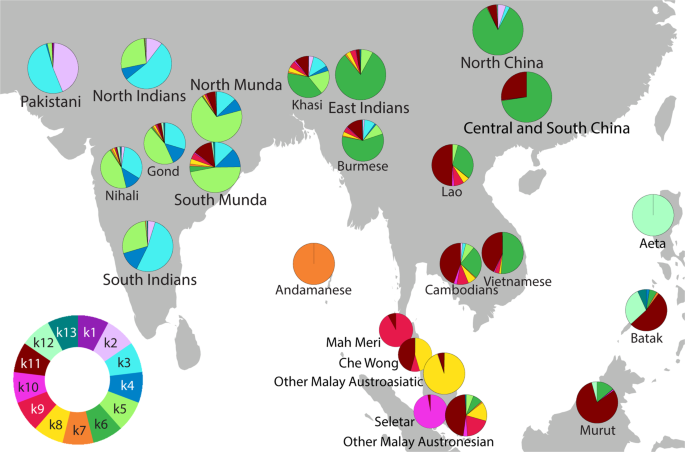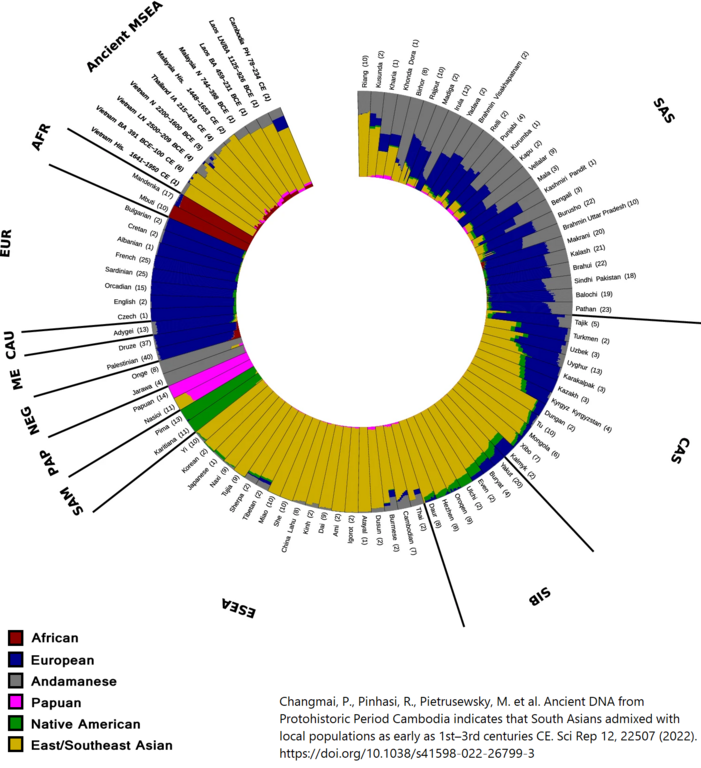Originally posted by Djehuti:
One problem is that people automatically group so-called "Negrito" types together as one monolithic group when they obviously are not. Not only is there phenotypic distinction aside from melanated skin and curly hair but the genetic distinction is striking.
Here is an excellent paper from Jinam et al. 2017: Discerning the Origins of the Negritos, First Sundaland People: Deep Divergence and Archaic Admixture

We first investigated the relationship between individuals by PCA. Figure 1A shows that the first two principal components (PCs) separates the Andamanese, Malaysian Negritos and Philippine Negritos into distinct clusters. If Papuans and Melanesians were included (supplementary fig. S4A, Supplementary Material online), the Philippine Negritos were located between the Papuans and Malaysian Negritos along PC2. When the Andamanese individuals were omitted, PC1 separates the Aeta, Agta, and Batak from the other populations whereas PC2 separates the Mamanwa and Jehai from other groups (fig. 1B). The Agta, Aeta, and Batak individuals form a comet-like pattern along PC1, which may indicate admixture events. Similarly, the Mamanwa also showed the comet-like pattern along PC2. The PCA plot without Agta and Aeta (supplementary fig. S4B, Supplementary Material online) places the Batak close to the non-Negrito Philippine groups, suggesting a high proportion of admixture. The Manobo and Mamanwa, both living in northern Mindanao, have a high affinity as several Manobo individuals clustered with the Mamanwa (fig. 1B and supplementary fig. S4B, Supplementary Material online).

The results of ADMIXTURE analysis from k = 2–7 are shown in figure 2. The cross-validation error assuming k = 1 to k = 9 number of clusters shows that k = 7 has the lowest error (supplementary fig. S5, Supplementary Material online). The orange-colored component is highest in the Austronesian-speaking non-Negrito groups, with varying proportions in the four Philippine Negritos, suggesting admixture. Among the Philippine Negrito groups, the Batak have the highest proportion of this orange component, corresponding well to their close proximity to the non-Negritos in the PCA plot (fig. 1B). From k = 6, the Mamanwa have their own genetic component (white), and at k = 7, the Batek were differentiated from other populations (yellow). These observations suggest that the Mamanwa and Batek have experienced a substantial amount of long-term genetic drift. To verify the presence of admixture, we used the D-statistic (Patterson et al. 2012). The results for D(Philippine Negrito, Andamanese; French, x), are shown in supplementary figure S6 in the Supplementary Material online. A negative Z-score implies gene flow between the Philippine Negritos and population x; highly negative Z-scores were observed for Philippine Negritos and Philippine non-Negritos, suggesting gene flow tended to involve groups that are geographically close. We classified individuals from Aeta, Mamanwa and Manobo groups who have less than 60% of their corresponding ancestral component proportion based on ADMIXURE result at k = 6 as highly admixed. In total, 22 individuals were omitted from subsequent population-based analyses.
Another problem which is far too prevalent is assumption making based on cranial morphology alone. Thus certain cranial facial forms are readily classed as "Negrito" and others "Mongoloid".
Here is a paper from Matsumara et al. 2019 that discusses the cranial morphology of Hoabinhians: Craniometrics Reveal “Two Layers” of Prehistoric Human Dispersal in Eastern Eurasia
^ Notice in the craniometric NNS map above, that Nicobarese fall into the 'Australoid' cluster along with the Jomon, whereas the Aeta Negritos of the Philippines fall into the Austronesian cluster which makes one wonder how many of those in the Australoid cluster including pre-Neolithic southern Chinese actually match that phenotype!
